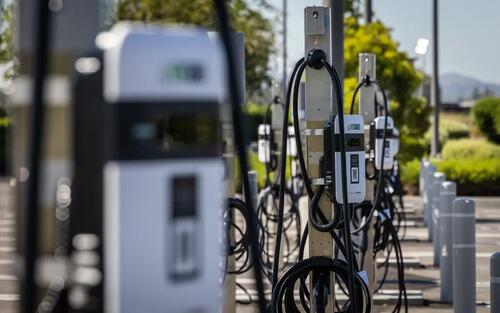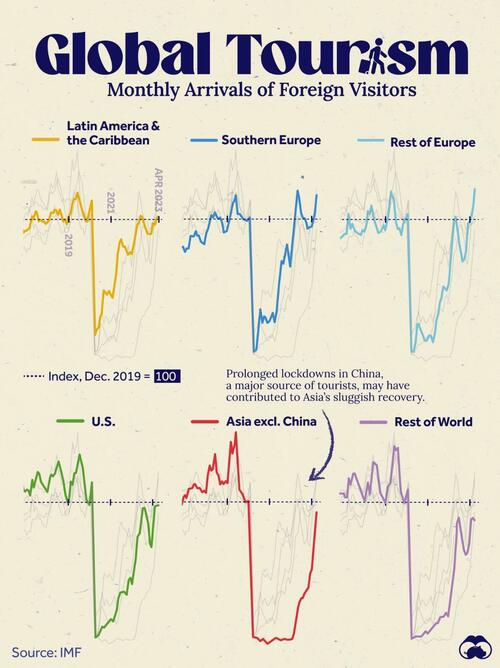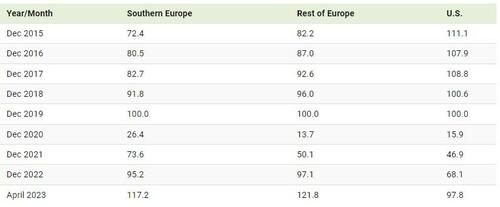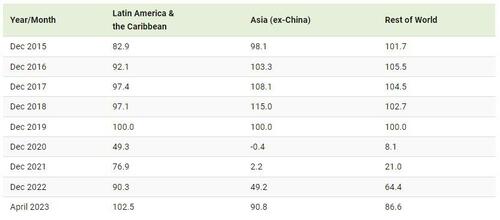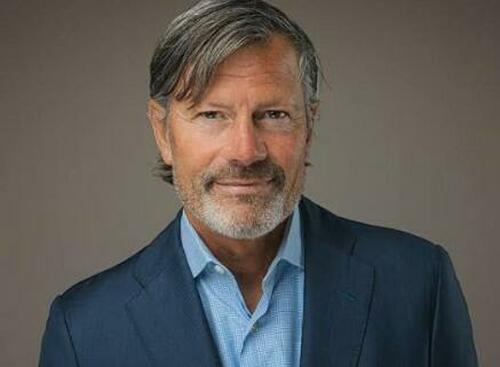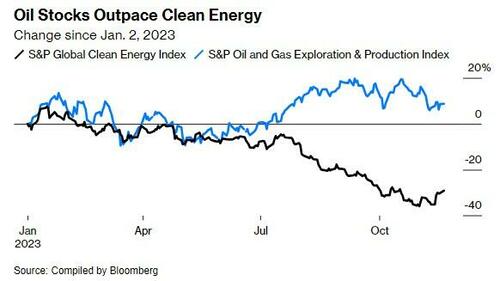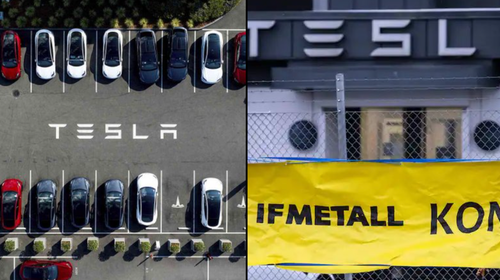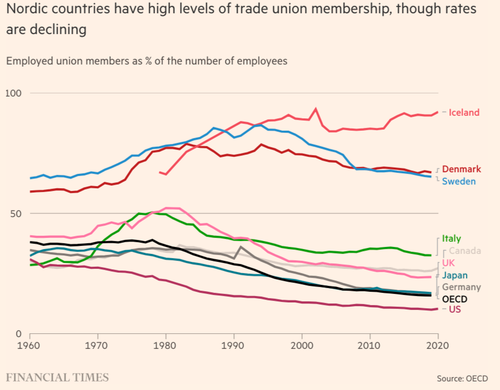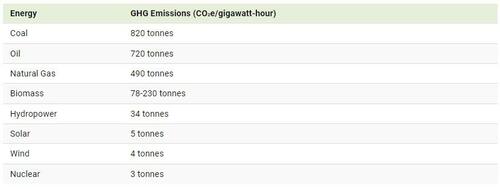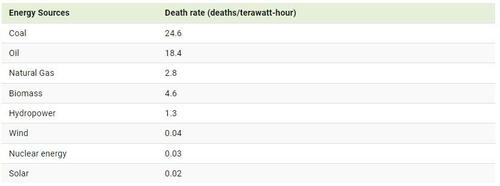Authored by John Cody via ReMix News,
Germany’s Welt newspaper, perhaps the most popular publication in the country, is well known for its pro-Ukraine stance and ran numerous articles in the past about the likely success of Ukraine’s military offensive against Russia.
However, in a column published yesterday by the paper’s chief correspondent, Sascha Lehnartz, the assessment of Ukraine’s chances in the war is decidedly bleak.

Entitled “Has Kyiv already lost?” the article describes Ukraine’s military growing increasingly despondent to the point that the country’s commander-in-chief admits there is a “stalemate” at the front.
“Winter is just around the corner. The counteroffensive seems to have failed. The allies are weary. And since the beginning of November at the latest, Ukrainian President Volodymyr Zelensky has a new opponent who was not necessarily to be expected: his own commander-in-chief, Valery Zaluzhny,” writes Die Welt.
Welt is referring to a recent interview in the Economist, in which Ukraine’s top general, Valery Zaluzhny, stated that “(a)s in the First World War, we have reached a technical level that puts us in a stalemate situation” and that in order for Ukraine to win, it would take miracle weapons to defeat the Russians, “like Chinese gunpowder.”
The paper details how the admission from Zaluzhny is a clear embarrassment for Zelensky.
“Everyone is tired and there are different opinions, regardless of their status,” said Zelensky in response to the comments at a press conference with EU Commission President Ursula von der Leyen, adding:
“But it’s not a stalemate.” His deputy bureau chief, Ihor Zhovkva said that talks of a stalemate “makes the aggressor’s job easier” and causes “panic” among Ukraine’s allies.

Soldiers of Ukraine’s National Guard 1st brigade Bureviy (Hurricane) practice during combat training at a military training ground in the north of Ukraine, Wednesday, Nov. 8, 2023. (AP Photo/Efrem Lukatsky)
In response, Welt wrote that the growing divisions between Ukraine’s armed forces and the government over the status of the war could mark a major turning point.
“The dispute between the president and the top military officer shows that the unified home front in Ukraine is crumbling. And every doubt expressed in Kyiv about Ukraine’s prospects of success is being reinforced in the corridors of European and American government headquarters,” writes Lehnartz.
Welt also points out that political victories of various populist leaders within Europe will likely create severe difficulties in terms of ongoing material and financial support to Ukraine. A deepening budget crisis in Germany also could mean further cuts to Ukraine’s budget, placing the country’s war effort at risk.
“The recent election victories of Geert Wilders in the Netherlands and Robert Fico in Slovakia — both of whom reject further arms sales to Ukraine — are also symptoms of growing war weariness in the West,” writes Welt.
“Italian Prime Minister Giorgia Meloni admitted this in September when she was tricked on the phone by a Moscow comedian duo: she saw ‘a lot of fatigue on all sides.’ Hungarian Prime Minister Viktor Orbán has already declared the Ukrainian strategy ‘failed.’ Everyone knows that, but no one (except Orbán) dares to say it out loud,” the paper continues.
Orbán has long been criticized for his peace efforts in Ukraine, warning that Russia cannot be defeated because it is a nuclear power and that thousands of Ukrainians and Russians are losing their fathers and brothers due to a war of attrition.
Welt then lists the major obstacles facing Ukraine on the battlefield, noting that Ukraine has retaken less than 0.25 percent of the territory it wishes to recapture from Russia during the counteroffensive. As a result, ‘the number of those who believe that Ukraine can still ‘win’ this war, i.e., achieve the liberation of all its territories occupied by Russia, is dwindling day by day. Russia’s Plan A, to take Kyiv in a few days and rule more or less directly, has ‘failed miserably,’ says James Nixey, director of the Russia and Eurasia program at the British think tank Chatham House. ‘But Plan B appears to be working: waiting for Ukraine’s allies to give up and go home.’”
…

Tatiana Burchik, center, mother of Ukrainian soldier Vadym “Gagarin” Belov, says her last goodbyes to her son near his coffin at a cemetery in Polonne, Khmelnytskyi region, Ukraine, Wednesday, Sept. 13, 2023. Vadyn was killed during an assault mission on Sept. 7 near Bakhmut, serving as an infantry serviceman of the 3rd Assault Brigade. (AP Photo/Alex Babenko)
However, the paper notes that this stalemate appears to be by design — at least to some extent. Western governments, for example, are struggling to provide simple military tech, such as artillery shells, in the promised number. These governments are still leery about providing more advanced military weapons, such as the Taurus guided missiles, which in theory could destroy the Kerch Bridge, a vital supply route for Russia. However, Western governments are still extremely wary of providing such weapons to Ukraine out of fear that the war could escalate. In effect, they want to provide only enough weapons to make sure Ukraine cannot lose, but also cannot win:
This is symptomatic of the German attitude, but ultimately also of the U.S. government. The American foreign policy expert Walter Russell Mead recently complained in the Wall Street Journal that the stalemate was ultimately the goal of the Biden government: exhausted Ukrainians would have to offer peace to Russia at some point, “and the White House then sells this as a glorious victory for democracy and the rule of law.”
However, the Welt article ends on a controversial note.
Despite spending much of the piece outlining how the war has reached a stalemate, resulting in incredible losses for both Russia and Ukraine, the article implies that the only way forward is doubling down on military support for Ukraine instead of working towards a peaceful solution.
…
“The West will have to decide whether it still believes in itself. And soon,” Welt concludes.
…
Read more here…

